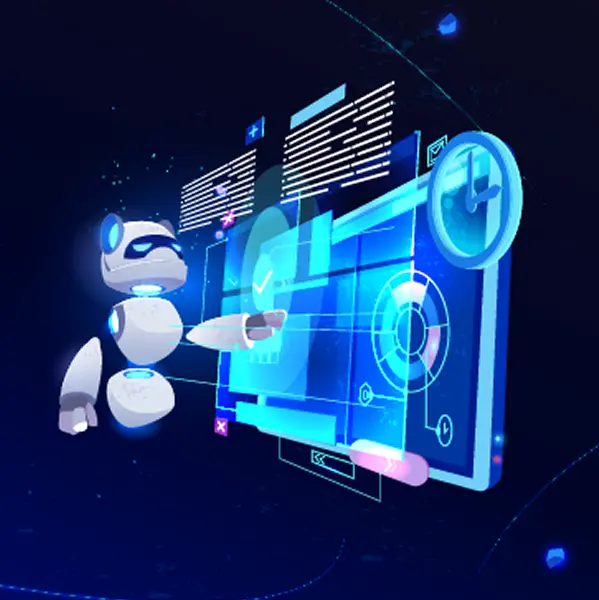Revolutionizing Healthcare Application Development with GenAI SDLC Toolkit
Company : OneCare

OneCare is a healthcare technology provider that has developed an innovative platform connecting hospitals, doctors, and patients through remote healthcare services.
Company Overview
OneCare is a healthcare technology provider that has developed an innovative platform connecting hospitals, doctors, and patients through remote healthcare services. Their platform facilitates advanced lifestyle care programs and medical services delivery, serving as a crucial bridge in the modern healthcare ecosystem. With a focus on delivering quality healthcare solutions, OneCare manages complex healthcare requirements that demand precise technical specifications for their development teams.
Business Problem
OneCare faced significant challenges in their Software Development Lifecycle (SDLC) that were impacting project delivery and healthcare service quality:
Manual Requirements Analysis:
- Business analysts spent 60-70% of their time manually interpreting complex healthcare requirements from medical professionals and administrators
- Converting healthcare compliance needs and clinical workflows into structured technical documentation took 4-5 weeks per project
- Inconsistent documentation formats across different business analysts led to development confusion and compliance risks
Communication Breakdown:
- Development teams frequently requested clarification on ambiguous healthcare requirements
- Multiple revision cycles between business analysts and developers caused critical project delays
- Lack of standardized documentation resulted in misaligned development efforts for healthcare solutions
Compliance and Quality Issues:
- Human error in healthcare requirements interpretation led to 45% of projects requiring scope changes
- Inconsistent documentation quality across different business analysts
- Missing HIPAA compliance details caused development bottlenecks and regulatory concerns
Proposed Solution
OneCare implemented a comprehensive GenAI SDLC Toolkit leveraging Amazon Bedrock with Claude 3.5 Sonnet as the core foundation model to transform their business analysis process for healthcare applications.
Requirements Processing Engine:
- Amazon Bedrock with Claude 3.5 Sonnet processes complex healthcare requirements
- Custom prompt engineering templates designed specifically for healthcare compliance and clinical workflows
- Intelligent parsing of unstructured healthcare requirements into structured, compliant documentation
Advanced RAG Implementation:
- Historical healthcare project documentation and compliance templates stored in Amazon S3
- FAISS vector search for matching similar requirements from past healthcare projects
- Context-aware generation based on healthcare standards and regulatory requirements
Document Generation Pipeline:
- Automated creation of comprehensive technical specifications with HIPAA compliance considerations
- Generation of user stories, acceptance criteria, and functional requirements for healthcare systems
- Standardized formatting ensuring consistency across all healthcare business analysts
Services and Solutions Used
Scalable AWS Infrastructure:
- Application Load Balancer – Ensures high availability and efficient traffic distribution across healthcare processing workflows
- Auto Scaling Groups – Dynamically manage EC2 instances based on healthcare documentation demand
- Amazon VPC – Provides secure, isolated network environment for sensitive healthcare data
- Amazon EC2 – Delivers reliable compute power for intensive AI processing of healthcare requirements
- Amazon S3 – Scalable storage for healthcare templates and generated documentation
- AWS Bedrock – Foundation for generative AI capabilities with Claude 3.5 Sonnet
- AWS Secrets Manager – Ensures secure credential and API management for healthcare compliance
- Amazon CloudWatch – Comprehensive monitoring and logging for healthcare data processing
Success Metrics
Operational Efficiency Gains:
- 75% reduction in requirements analysis time (from 4-5 weeks to 1-2 weeks)
- 85% improvement in documentation consistency across healthcare business analysts
- 70% decrease in developer clarification requests
- 90% reduction in documentation revision cycles
Quality Improvements:
- 65% reduction in scope changes due to requirement misinterpretation
- 80% improvement in first-time-right development implementations
- 55% decrease in project delivery delays caused by unclear requirements
- 95% improvement in HIPAA compliance documentation accuracy
Business Impact:
- annual savings in development costs through reduced rework
- 40% faster time-to-market for new healthcare solutions
- 35% increase in project profitability due to efficient resource utilization
- 50% growth in client retention rates among healthcare providers
Lessons Learned
Healthcare-Specific Prompt Engineering:The success was driven by developing domain-specific prompts that understood both healthcare compliance requirements and technical specifications, ensuring accurate translation of clinical needs into development-ready documentation.
Comprehensive Healthcare Knowledge Base:Integration with historical healthcare project data and regulatory guidelines enabled the AI to leverage past successful implementations while ensuring compliance with healthcare standards.
Seamless Workflow Integration:The toolkit integrated smoothly with existing healthcare business analyst workflows, requiring minimal training while ensuring high adoption rates among clinical and technical teams.
Continuous Compliance Monitoring:Regular validation against healthcare regulations and standards was essential for maintaining trust and ensuring all generated documentation met regulatory requirements.
Revolutionizing Healthcare Application Development with GenAI SDLC Toolkit
Company : OneCare

OneCare is a healthcare technology provider that has developed an innovative platform connecting hospitals, doctors, and patients through remote healthcare services. Their platform facilitates advanced lifestyle care programs and medical services delivery, serving as a crucial bridge in the modern healthcare ecosystem. With a focus on delivering quality healthcare solutions, OneCare manages complex healthcare requirements that demand precise technical specifications for their development teams.
Business Problem
OneCare faced significant challenges in their Software Development Lifecycle (SDLC) that were impacting project delivery and healthcare service quality:
Manual Requirements Analysis:
- Business analysts spent 60-70% of their time manually interpreting complex healthcare requirements from medical professionals and administrators
- Converting healthcare compliance needs and clinical workflows into structured technical documentation took 4-5 weeks per project
- Inconsistent documentation formats across different business analysts led to development confusion and compliance risks
Communication Breakdown:
- Development teams frequently requested clarification on ambiguous healthcare requirements
- Multiple revision cycles between business analysts and developers caused critical project delays
- Lack of standardized documentation resulted in misaligned development efforts for healthcare solutions
Compliance and Quality Issues:
- Human error in healthcare requirements interpretation led to 45% of projects requiring scope changes
- Inconsistent documentation quality across different business analysts
- Missing HIPAA compliance details caused development bottlenecks and regulatory concerns
Proposed Solution
OneCare implemented a comprehensive GenAI SDLC Toolkit leveraging Amazon Bedrock with Claude 3.5 Sonnet as the core foundation model to transform their business analysis process for healthcare applications.
Requirements Processing Engine:
- Amazon Bedrock with Claude 3.5 Sonnet processes complex healthcare requirements
- Custom prompt engineering templates designed specifically for healthcare compliance and clinical workflows
- Intelligent parsing of unstructured healthcare requirements into structured, compliant documentation
Advanced RAG Implementation:
- Historical healthcare project documentation and compliance templates stored in Amazon S3
- FAISS vector search for matching similar requirements from past healthcare projects
- Context-aware generation based on healthcare standards and regulatory requirements
Document Generation Pipeline:
- Automated creation of comprehensive technical specifications with HIPAA compliance considerations
- Generation of user stories, acceptance criteria, and functional requirements for healthcare systems
- Standardized formatting ensuring consistency across all healthcare business analysts
Services and Solutions Used
Scalable AWS Infrastructure:
- Application Load Balancer – Ensures high availability and efficient traffic distribution across healthcare processing workflows
- Auto Scaling Groups – Dynamically manage EC2 instances based on healthcare documentation demand
- Amazon VPC – Provides secure, isolated network environment for sensitive healthcare data
- Amazon EC2 – Delivers reliable compute power for intensive AI processing of healthcare requirements
- Amazon S3 – Scalable storage for healthcare templates and generated documentation
- AWS Bedrock – Foundation for generative AI capabilities with Claude 3.5 Sonnet
- AWS Secrets Manager – Ensures secure credential and API management for healthcare compliance
- Amazon CloudWatch – Comprehensive monitoring and logging for healthcare data processing
Success Metrics
Operational Efficiency Gains:
- 75% reduction in requirements analysis time (from 4-5 weeks to 1-2 weeks)
- 85% improvement in documentation consistency across healthcare business analysts
- 70% decrease in developer clarification requests
- 90% reduction in documentation revision cycles
Quality Improvements:
- 65% reduction in scope changes due to requirement misinterpretation
- 80% improvement in first-time-right development implementations
- 55% decrease in project delivery delays caused by unclear requirements
- 95% improvement in HIPAA compliance documentation accuracy
Business Impact:
- annual savings in development costs through reduced rework
- 40% faster time-to-market for new healthcare solutions
- 35% increase in project profitability due to efficient resource utilization
- 50% growth in client retention rates among healthcare providers
Lessons Learned
Healthcare-Specific Prompt Engineering: The success was driven by developing domain-specific prompts that understood both healthcare compliance requirements and technical specifications, ensuring accurate translation of clinical needs into development-ready documentation.
Comprehensive Healthcare Knowledge Base: Integration with historical healthcare project data and regulatory guidelines enabled the AI to leverage past successful implementations while ensuring compliance with healthcare standards.
Seamless Workflow Integration: The toolkit integrated smoothly with existing healthcare business analyst workflows, requiring minimal training while ensuring high adoption rates among clinical and technical teams.
Continuous Compliance Monitoring: Regular validation against healthcare regulations and standards was essential for maintaining trust and ensuring all generated documentation met regulatory requirements.
Latest case studies








